Building Products in BIM
Creating Building Product Content for BIM
Most BPMs already create and distribute extensive libraries of CAD-based content about their products, focused primarily on graphical and geometric aspects. Non-graphical data is usually found in accompanying spec sheets, and other technical product literature.
BIM requires an entirely new kind of content that combines the graphical and non-graphical data into intelligent objects. The process of creating these intelligent objects of building products has been evolving as BIM adoption and implementation have grown over the past decade.
Architects
Architects were the first group that represented large scale adoption of BIM in the U.S. construction industry. Since there was very little BIM content at the beginning, most practitioners had to build their own. This created a variety of problems:
- Inconsistency.Each practitioner created objects to suit the immediate needs of a project so the approach to both geometric and property data were not consistent from object-to-object or from project-to-project, and certainly not across firms.
- Inaccuracy. Because the information is entered into data fields, mistakes were hard to catch and might not be discovered until much later in a project, or when an object is used by another modeler.
- File size.Some BIM software is particularly vulnerable to being overloaded by objects with large file sizes, slowing performance and sometimes crashing the software.
BIM Software Companies
In response to growing customer demand for content, the BIM software companies began creating libraries of generic objects that could be shipped with the software. Many of these companies are still actively expanding their libraries and refining the quality of the objects for optimal performance in their tools. Some BIM software makers also provide templates for users to create their own objects.
Building Product Manufacturers
As an increasing number of design professionals began asking for BIM-compliant product information, the BPMs initiated a variety of programs to create and distribute BIM objects. Each is distinctive to the nature and usage of its particular products.
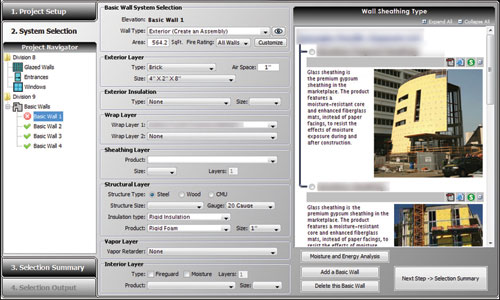 |
BIM content can be made available both as a library of pre-built individual objects that users can download, and through an online configurator (shown here) that creates complete BIM wall assemblies on demand then uploads the full assembly into the user�s BIM project. Image courtesy of Georgia-Pacific Gypsum and DeMichele Group |
Â
Many BPMs had already recently developed a new type of 3D modeling content for use in Google SketchUp. Warren Barber, Dens® Brand product manager at Georgia-Pacific Gypsum recalls, "We got involved fairly early with 3D models for Google SketchUp, but we stood at the edge of the BIM pool for a long time." As industry-wide BIM use advanced, his company realized the benefit of "being where the architects are. We know you can never have enough sales people in the field, so we have BIM models out there that can act as a sales person for us." He also recognized the trend towards earlier and more collaborative product decision making that is being facilitated by the assembly of a model. "We want to be at the decision-making table sooner in the process by providing our models. If contractors on BIM projects have influence on product ideas, we want them to be able to easily introduce our models."
Notice
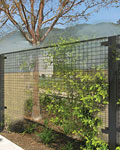
www.greenscreen.com
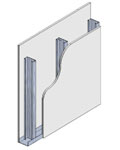
www.gpgypsum.com
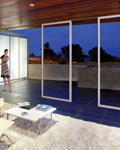
www.nanawall.com
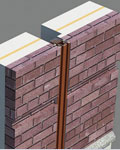
www.nystrom.com/Nystrom-BIM-Library

www.pellacommercial.com
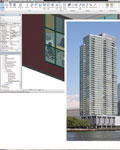
www.ppgideascapes.com
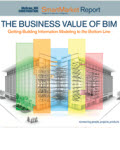
www.bim.construction.com









